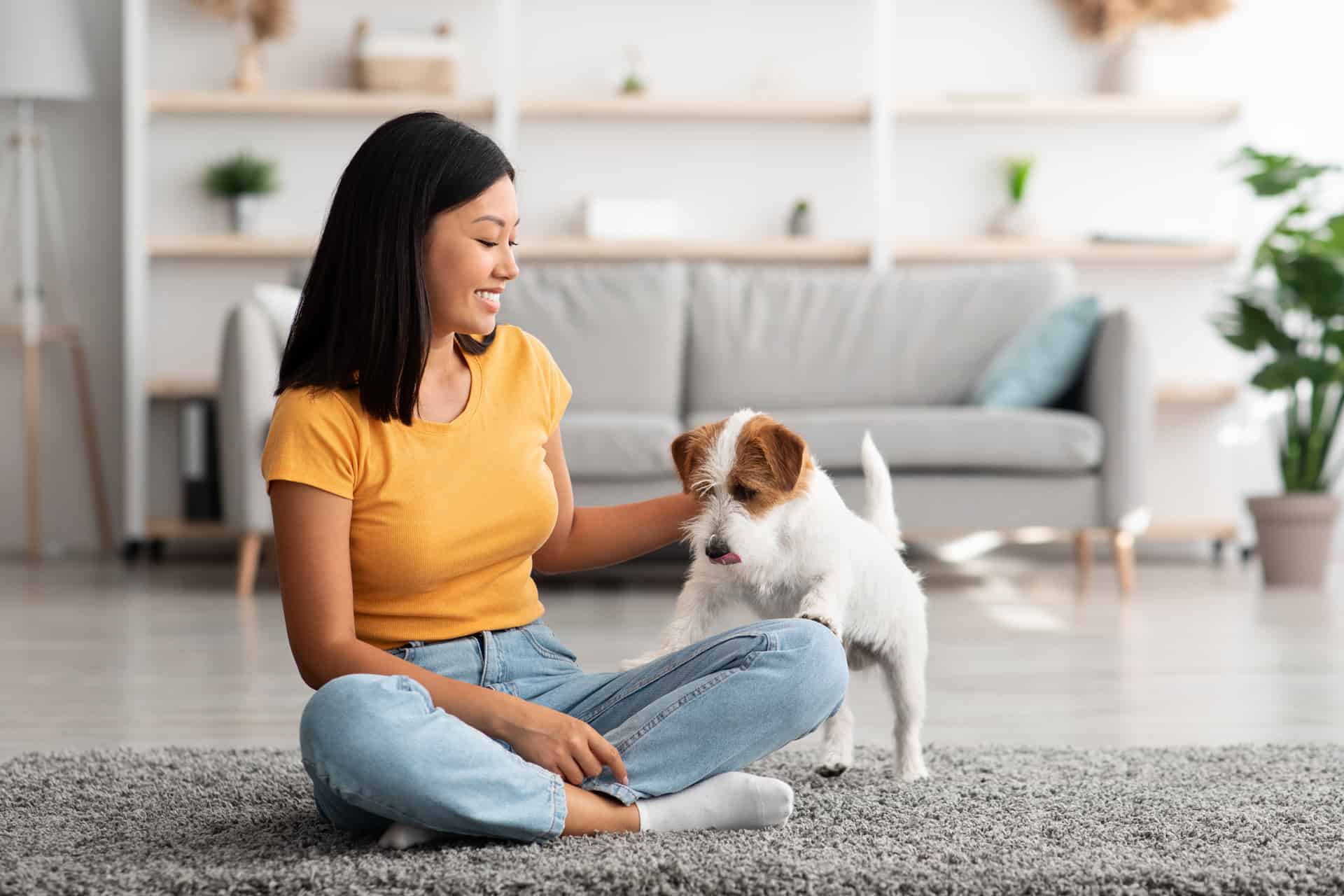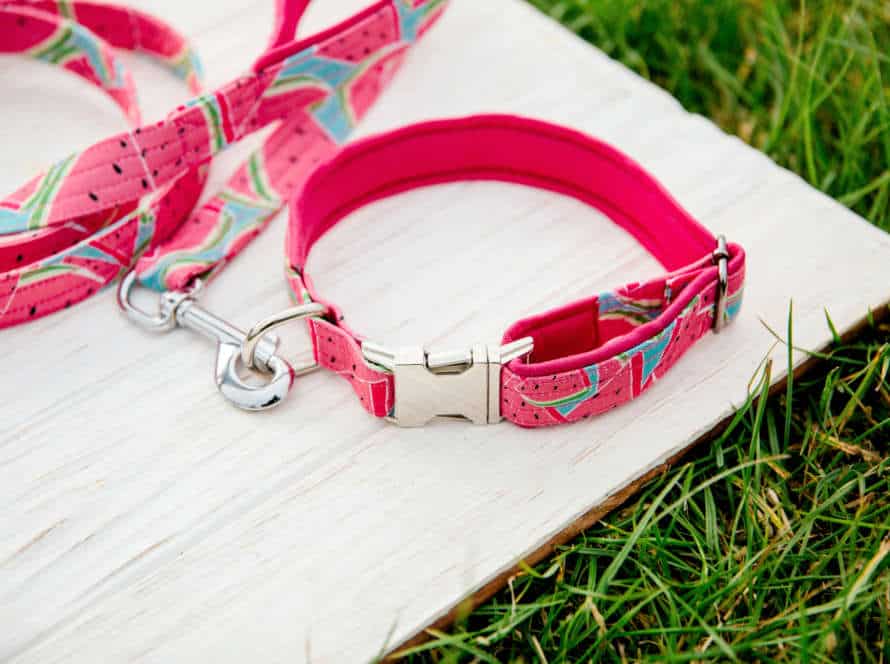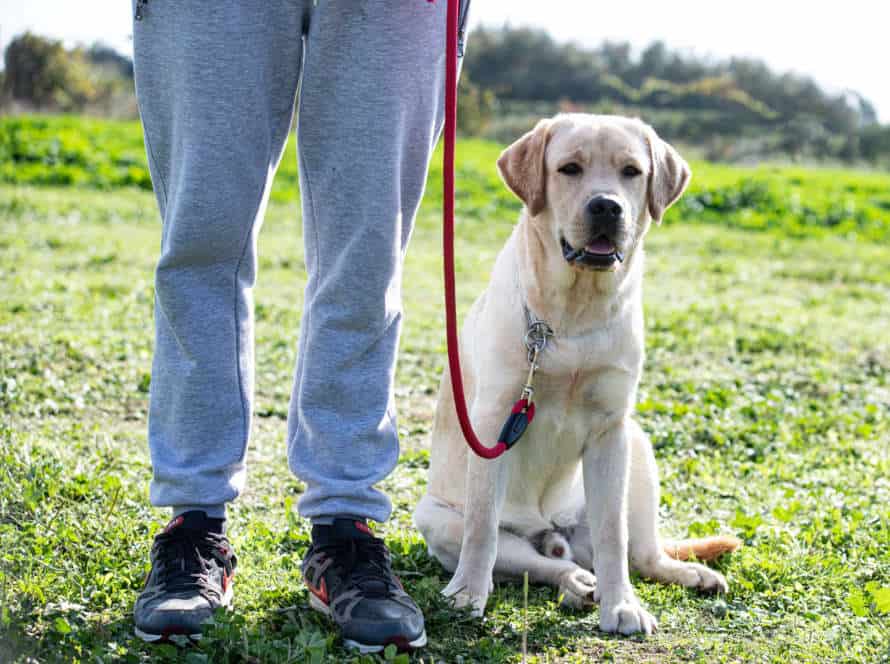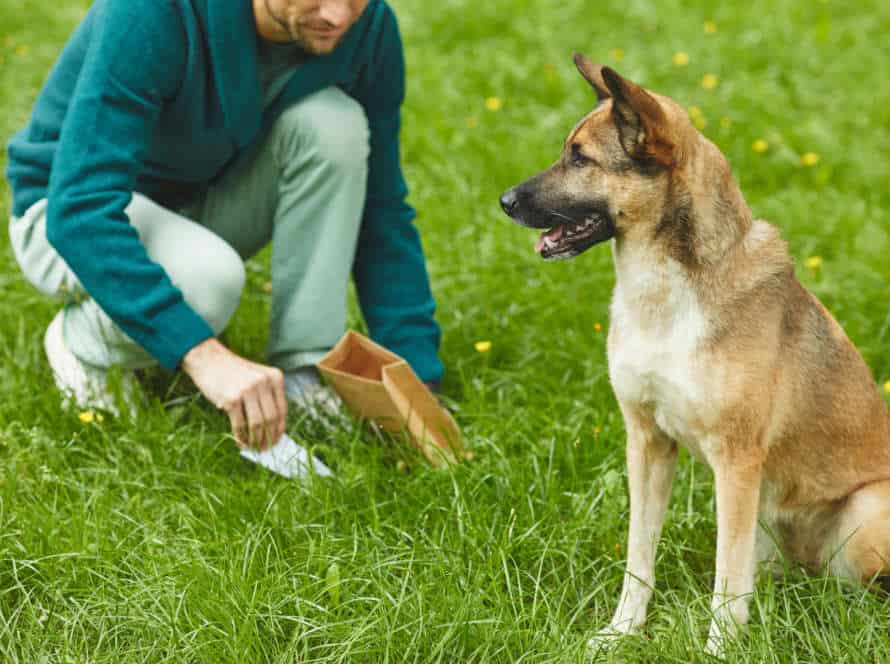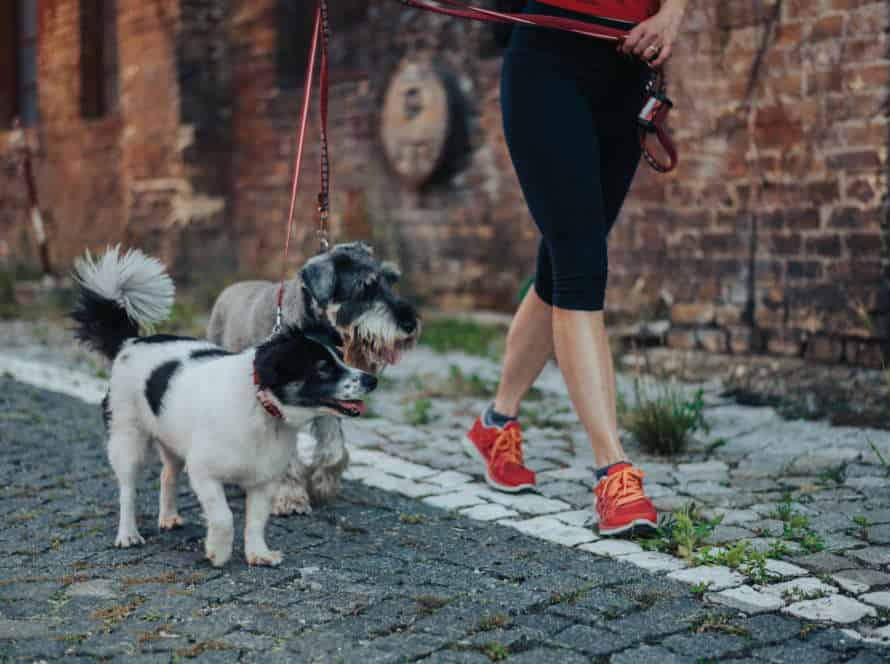Preventing Regression: Maintaining House Training Success Long-Term
Training your furry friend for the house is a must for being a pet owner! It takes some time and lots of patience for it to be a long-term success. It’s important to stay firm with the training, so that your pet doesn’t go back to having accidents inside. Here are some tips to help keep your pet’s house training success long-term:
- Feed and let your pet go out for a potty break on a regular schedule.
- Keep an eye on them indoors and limit their access to areas where they’ve had accidents before.
- Show appreciation and give rewards when they go outside to do their business and act well.
- Be patient and consistent with any new training methods you try.
- Clean up the mess completely if your pet has an accident indoors. This will get rid of any scent, so they are not tempted to go there again.
It requires lots of patience and consistency to maintain your pet’s house training success. But, in the end, you’ll have a healthy and happy pet!
Understanding the Causes of Regression
If your pup is house trained, but has started having accidents, it’s confusing. The causes of regression differ and it’s essential to spot what’s causing the regression. This way, you can ensure permanent success in training your pup. Keep reading to find out the potential causes of regression and how to avoid them.
Changes in routine
Changes in routine can cause house training regression in dogs. Dogs love routine and consistency. Any sudden changes or deviations from their daily routine may lead to stress, anxiety, and confusion. Common changes which may trigger regression include:
- Moving to a new house
- A new family member
- A new pet
- A change in owner’s work schedule.
To prevent regression, make gradual changes to your routine and introduce new experiences slowly. Positive reinforcement while your dog adjusts to the changes will help you maintain their house training success. Consider revisiting the basics of house training such as:
- Using a regular feeding schedule
- Inculcating positive reinforcements through rewards.
This will ensure your dog’s training is solid.
Physical or medical issues
Regression in house training can be caused by physical or medical issues. These can affect a pet’s bladder or bowel movements, resulting in accidents indoors.
Common physical or medical issues include:
- Urinary tract infection (UTI)
- Bladder stones
- Digestive problems
- Arthritis/mobility issues
- Diabetes/kidney disease
If you suspect your pet has any of these issues or has changed recently, it’s best to contact your vet for diagnosis and treatment.
You can prevent regression and maintain house training success by:
- Keeping a consistent routine
- Giving plenty of potty breaks
- Using positive reinforcement
- Being aware of any physical/medical problems
Behavioral issues
Regression is when a dog’s good behaviors suddenly drop off. Causes? Shifts in their environment, training inconsistency, fear, or punishment. Identifying the source? First step.
Preventing regression? Consistent training, a regular environment, and positive reinforcement. Tips:
- Feeding, exercise, potty breaks – stick to a routine.
- Positive reinforcement for good behavior.
- NO punishment.
- Consistently reward good behavior.
- Training – make it fun for everyone!
Consistency in Training
House training a pet can be difficult. However, with frequent and consistent training, success can be achieved swiftly! Keeping regularity in the training is fundamental to avoiding any backslides, and retaining the newly-trained behavior long-term. This part will expand on the significance of being consistent with the regimen, the potential consequences of an inconsistent schedule, plus some advice on how to remain steady with the program.
Stick to a routine
For house training success, it’s important to have & stick to a routine. Consistency helps prevent regression. Here are tips:
- Designate meal times.
- Take them outside after eating/drinking & before bed.
- Use commands to signal it’s time to go.
- Reward for eliminating outdoors.
- Supervise to prevent accidents.
- Even on weekends & holidays, remain consistent.
By reinforcing positive behaviors & sticking to this routine, regression can be minimized & house training success maintained.
Consistent reinforcement of positive behavior
Consistency is vital for successful house training of your pet! Here are some tips:
- Set a routine and follow it. Feed, play and potty breaks at regular times.
- Whenever your pet behaves well, reward it with treats or praise.
- If your pet does something wrong, stop it and show it a positive behavior.
- Be patient – training takes time and each pet learns differently.
- Most importantly, be consistent! This prevents regression and helps you achieve success in your training endeavors.
Avoid confusing or mixed signals
Consistency is important for house-training your furry friend. Mixed signals can confuse the animal and cause regression, undoing all your hard work.
Here are some tips to remain consistent and avoid regression:
- Stick to a regular feeding and exercise routine.
- Go to the same area each time when they need to eliminate.
- Use the same verbal commands or cues, such as “go potty” or “do your business”.
- Reward the pup for positive behavior, not punish them for accidents.
- If the pup regresses, revise and re-establish consistency in your training methods.
Patience and consistency are essential for successful training and long-term house training success. Pro tip: Track progress and setbacks in a record to see their training patterns and make any adjustments needed.
Reinforcement Techniques
Reinforcement strategies are critical for teaching a puppy and keeping its progress steady. It uses rewards to urge desirable actions and stop undesirable ones. Reinforcement is an efficient and friendly way of directing your dog’s conduct.
This part will talk about the various kinds of reinforcement and how to utilize them properly.
Positive reinforcement
Positive reinforcement is a powerful tool to help keep dogs successfully house trained in the long run. Dogs learn better with rewards and positive reinforcement than punishments and negative reinforcement. Follow these tips to use positive reinforcement when house training your pup:
- Give treats, praise, and positive feedback when your pup does the right thing and goes outside to do their business.
- Create a consistent schedule for taking your dog outside and use verbal commands such as “go potty” to help them understand what you want.
- Don’t punish your pup for accidents or mistakes. Instead, redirect their behavior positively towards the desired outcome.
- Gradually reduce the frequency and amount of treats and rewards as your pup gets better at house training.
- Remember to be patient and consistent when using positive reinforcement. With time and effort, your pup will form good habits and stick to them for the long term.
Verbal praise and rewards
Verbal praise and rewards are great for keeping your pet’s house training successes long-term. Here’s how to use them effectively:
- Verbal Praise: As soon as your pup goes potty outside, give verbal praise with a cheerful tone. Use words like “good boy/girl“, “well done“, or “awesome“. This will reinforce the good behaviour and encourage it to happen again.
- Rewards: Along with verbal praise, give your pup tangible rewards like treats, toys, or playtime. This will further reinforce the behaviour desired and train them to do it again. Remember to watch your pup’s diet and not overfeed them with treats. Also, only give rewards after they have gone potty outside.
With consistent use of verbal praise and rewards, you can make sure your pet remains house-trained long-term.
Treats and toys
Treats & toys are essential for reinforcement training to stop regression and make house training your pet successful long-term. Here’s how to use them properly:
- Treats: Give high-value treats like cheese or chicken when your pet goes outside. Say ‘good job‘ and give them a treat right away. Don’t give treats if they go inside, but take them outside instead!
- Toys: Use toys as rewards outside for good behavior or obedience commands. When inside, use toys as a distraction so they don’t have accidents. Try interactive toys with treats to keep them mentally stimulated and reduce accidents.
Pro tip: Consistently use treats and toys with positive reinforcement for the designated potty area for long-term success in house training your pet.
Negative reinforcement
Negative reinforcement is a great way to keep your pup from regressing and maintain house training success.
It’s simple to use: when your dog does something you don’t want them to do, like jumping or chewing, say “no” or “stop”. Then, quickly redirect their attention to something you want them to do, like playing with a toy or doing a trick.
Repeat this process whenever they do the unwanted behavior.
And, if they do something you like, praise and reward them.
This will help them to keep up the good behavior.
Timeout and ignoring negative behavior
Timeouts and ignoring bad behavior are two techniques that can help maintain house training success in pets over the long haul.
Timeout means temporarily separating a pet from the family and denying attention when they bark, bite, or jump. Pets learn that this will lead to bad outcomes.
Ignoring bad behavior means no eye contact or reinforcement when pets act up. Eventually, they stop doing it.
These methods are effective for teaching good habits. But, positive reinforcement and consistency are musts.
Pro Tip: Reinforcement works best with positivity, consistency, and patience. Pets can be taught to only do good things. That way, they can be happy and healthy with their owners.
Utilizing corrective tools (but never physical punishment)
As a pet owner, it’s key to use corrective tools to help positive behavior in your furry friend. No physical punishment! Here are some tips:
- Positive Reinforcement – Give treats, verbal praise or affection for desired behavior like going potty outside.
- Timeouts – Redirect unwanted behavior like going potty inside or furniture gnawing to a timeout space like a crate or playpen.
- Environmental Correction – Give easy access to go outside or provide pet-proof containers for toys and food.
Consistency is vital in reinforcing positives and preventing regression.
Addressing Behavioral Issues
House training your pet can be tough. After all the hard work, you want to make sure they don’t go back to their old ways. To ensure they don’t regress, you need to address their behavioral issues. Here, we will discuss how to tackle them.
Separation anxiety
Separation anxiety is a common issue among dogs. It can lead to behavioral regressions, such as house training accidents. To prevent this, there are steps owners can take to maintain their dog’s success with house training long-term.
- Create a daily routine. This should include exercise, mental stimulation, and specific times for feeding, playtime, and potty breaks.
- Use desensitization exercises. This will help teach dogs to become comfortable with being alone. Positive reinforcement, comforting toys, and treats can be used.
- Get help from a professional. A dog trainer or behaviorist can provide additional support and guidance for addressing separation anxiety and any resulting issues.
With patience, consistency, and the right tools, owners can help their dogs feel comfortable when left alone. This will prevent regression in house training success.
Territorial marking
Territorial marking is a common problem for pet owners, especially with dogs. It’s when they pee or poop inside the house to “claim” it. To stop this and keep your dog house trained, here are some tips:
- Get your pet neutered/spayed – this could reduce the need to mark their territory.
- Clean the marked areas properly – use an enzyme cleaner to get rid of any smell that could attract your pet.
- Block off areas they mark or show interest in.
- Keep a consistent routine – feed and walk them at the same times to make them feel secure.
- Ask for professional help – if the marking persists, get assistance from a professional.
By following these steps, you can minimize territorial marking and make sure your pup stays house trained.
Aggression towards people or other dogs
Aggression towards people and other dogs can be concerning and intimidating. Training and early intervention can help. Here are some tips:
- Consult a pro to find the cause of aggression.
- Socializing your pup early and often can acclimate them to new places, people, and pets. This can reduce aggression.
- Positive reinforcement, like treats and praise, is key. It strengthens the bond between you and your pet.
- Know your dog’s body language. Signs of aggression, like growling or showing teeth, must be addressed calmly.
A little effort early on can keep aggression at bay and maintain house training success.
Seeking Professional Help
Tried training your pup? No success? Get help! Seek an experienced dog trainer, animal behaviorist, or vet. This can assist in avoiding a house training regression. Here’s what kind of help is available:
Consulting a veterinarian
If your pup’s housetraining has gone awry, it might be time to get a vet checkup. They’ll be able to tell if there’s a medical cause and help you stay successful with house training. Here are some signs to look out for:
- Potty trained pooch starts piddling in the house.
- Seemingly hurt or uncomfortable when urinating or pooping.
- Excessive licking or whining when going to the bathroom.
A vet can suggest medicines or diet changes, plus advice on staying successful with house training. Like creating a routine and using positive reinforcement. Don’t forget, if you notice any sudden changes in your pet’s behavior or health, go to the vet.
Reaching out to a professional dog trainer
Reaching out to a professional dog trainer can be beneficial. They can give you personalized advice and a plan suited to your pup’s breed, personality, and needs. Plus, they can help identify problems that could be causing regression or reluctance to follow the house training routine. These can include separation anxiety, medical issues, changes in the home, etc. Working with a trainer will ensure your pup is happy, healthy and well-trained for years to come.
Consideration of medication or therapy options
When a dog’s house training success starts to decline, meds and therapy can help. Prozac and Clomicalm reduce anxiety and obsessive-compulsive behaviors. Behavior modification therapy can address underlying causes of fear. Find a qualified vet or behaviorist for an accurate diagnosis and personal treatment plan. Consistency and patience are key to long-term success.
Frequently Asked Questions
Q: How can I prevent regression in house training my dog?
A: One way to prevent regression is to maintain a consistent schedule for feeding, potty breaks, and exercise. Also, keep an eye out for any changes in behavior or health that could indicate a need for a change in routine.
Q: What are some common causes of regression in house training?
A: Regression can be caused by a variety of factors such as a change in schedule or routine, stress or anxiety, illness, or lack of reinforcement or consistency in training.
Q: How often should I take my dog outside for potty breaks?
A: The frequency of potty breaks will depend on your dog’s age, size, and activity level. As a general rule, puppies and smaller dogs may need more frequent breaks than larger or adult dogs. It’s important to take your dog out at regular intervals, such as after meals, naps, and playtime.
Q: What should I do if my dog has already regressed in house training?
A: Don’t become frustrated or discouraged. Go back to the basics of training and reinforce good behavior with rewards and positive reinforcement. Consistency is key, so stick to a routine and remain patient.
Q: How can I reinforce good behavior in house training?
A: Reward your dog with treats or praise immediately after they display good behavior. Consistency in rewarding good behavior will help reinforce the desired behavior.
Q: Is it ever too late to house train my dog?
A: No, it’s never too late to train your dog. However, training an older dog may take longer and require more patience and consistency in reinforcing good behavior.

